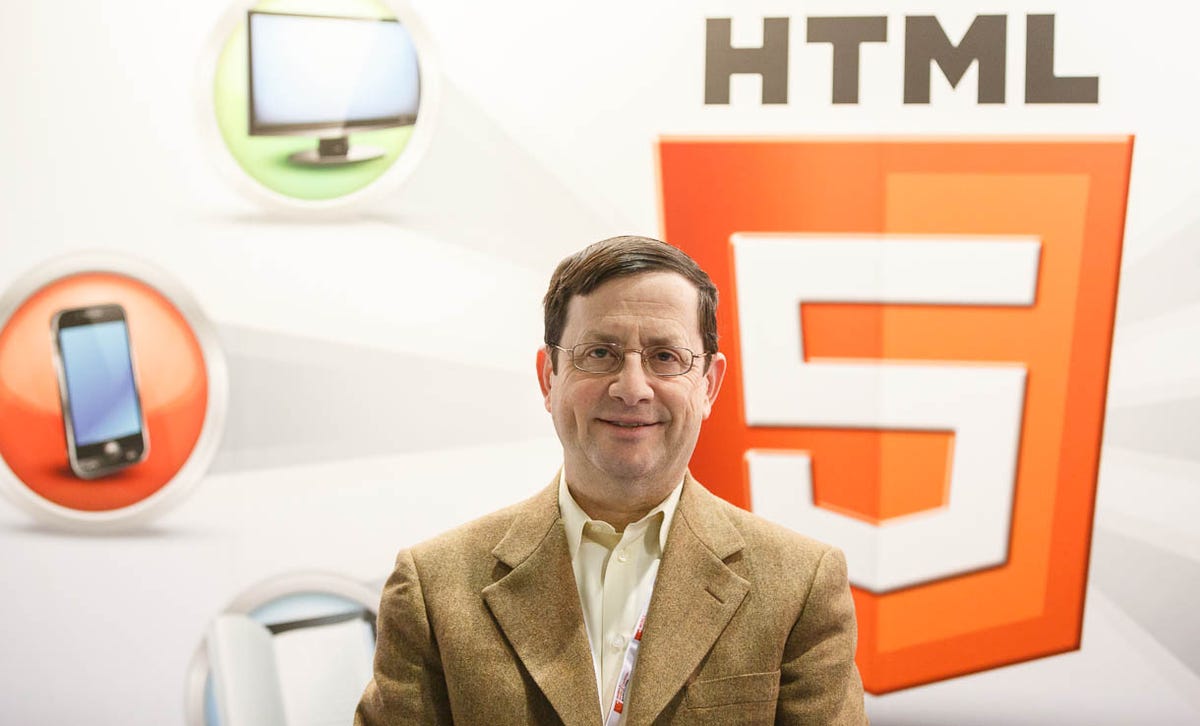
Stephen Shankland/CNET
BARCELONA, Spain–You’re used to the Web on your PC. You’re getting used to it on your smartphone. So what’s next?
Publishing and automobile industry players have just begun spinning up efforts at the World Wide Web Consortium, said W3C Chief Executive Jeff Jaffe in an interview here at Mobile World Congress. So don’t be surprised to see proprietary technology for e-book readers and in-dash computer systems slowly disappear in favor of software based on Web technology.
Books are perhaps an obvious area for Web technology, given that in electronic form they’re just formatted documents and the Web began its life as a way to share formatted documents. But the two domains have taken years to reach today’s level of convergence.
“The Web equals publishing,” Jaffe said. “There’s really no difference anymore.”
Among the inroads Web technology has made into publishing:
- Amazon moved to an e-book format that recycles Web technology, to move beyond simple text so things like children’s books and comics are more feasible.
- The EPUB 3.0 format uses XHTML, a relative of the HTML technology used to describe Web pages; CSS, an increasingly important standard for Web page formatting and effects such as animation; and SVG, a graphics format for imagery such as logos and illustrations.
- Browser maker Opera has sought to advance Web standards for e-readers. One big part of that is flexible layouts that can adapt to many different screen sizes and resolutions. With Opera’s shift to WebKit-based browsers, it’s not hiring programmers for the e-reader technology, CEO Lars Boilesen told CNET. Leading the project is Opera Chief Technology Officer Håkon Wium Lie, the initial creator of CSS.
“There are certain properties of the Web — the linkiness, business models such as advertising, distribution models — that some segments of the publishing insustry would like to adopt,” Jaffe said. “That’s our biggest new initiative at the business level.”
Related stories
- MWC 2022: How to Watch the Samsung Galaxy Book Reveal
- CES 2021: What to expect as the show goes all-digital
- Microsoft warns it might miss revenue guidance because of coronavirus
- Spending time with Huawei’s new Mate XS
- LG unveils new K series phones
The Web, though, is more than a static publishing medium now. With each passing year it becomes a more sophisticated vehicle for interactive applications. That raises the prospect eventually of more interactive books.
That interactivity is part of the reason the automotive industry is getting involved, too. Web technology can be used in in-car software for shopping, navigation, and the usual array of work and personal uses of the Web today such as e-mail or social networking.
The automotive industry also has new areas, though. Just as work goes on to adapt the Web to mobile phones, letting Web applications run the interface with hardware such as accelerometers and gyroscopes, the car industry is contemplating specific interactions with vehicular systems and data.
The W3C’s work also involves ensuring that the technology can be used in a way to minimize driver distraction, Jaffe said.
The new directions follow in the footsteps of entertainment-industry players such as Netflix that climbed aboard the Web platform. That project began two years ago and is now bearing fruit.
Building on the earlier HTML5 work that added a mechanism for building video into Web sites without needing plug-ins, programmers and standards bodies have more recently been concentrating on digital rights management (DRM) that lets video be encrypted and adaptive streaming so video can change quality as network conditions change.
The Web work extends from streaming services to hardware such as TVs and set-top boxes. One benefit of moving to Web technology is that it lowers barriers between PCs and other devices, making it easier to build online services that don’t care about what specific hardware they’re dealing with.
It isn’t always easy reconciling the philosophy of the Web with the demands of industry, though. Ian Hickson, an influential HTML standard editor, objected strenuously to DRM-ccontrolled video on the Web, but the standard doesn’t actually build DRM into the Web. Instead, it provides a mechanism to hand off encryption to separate software. The new technology is arriving in browsers, including Google’s Chrome.



